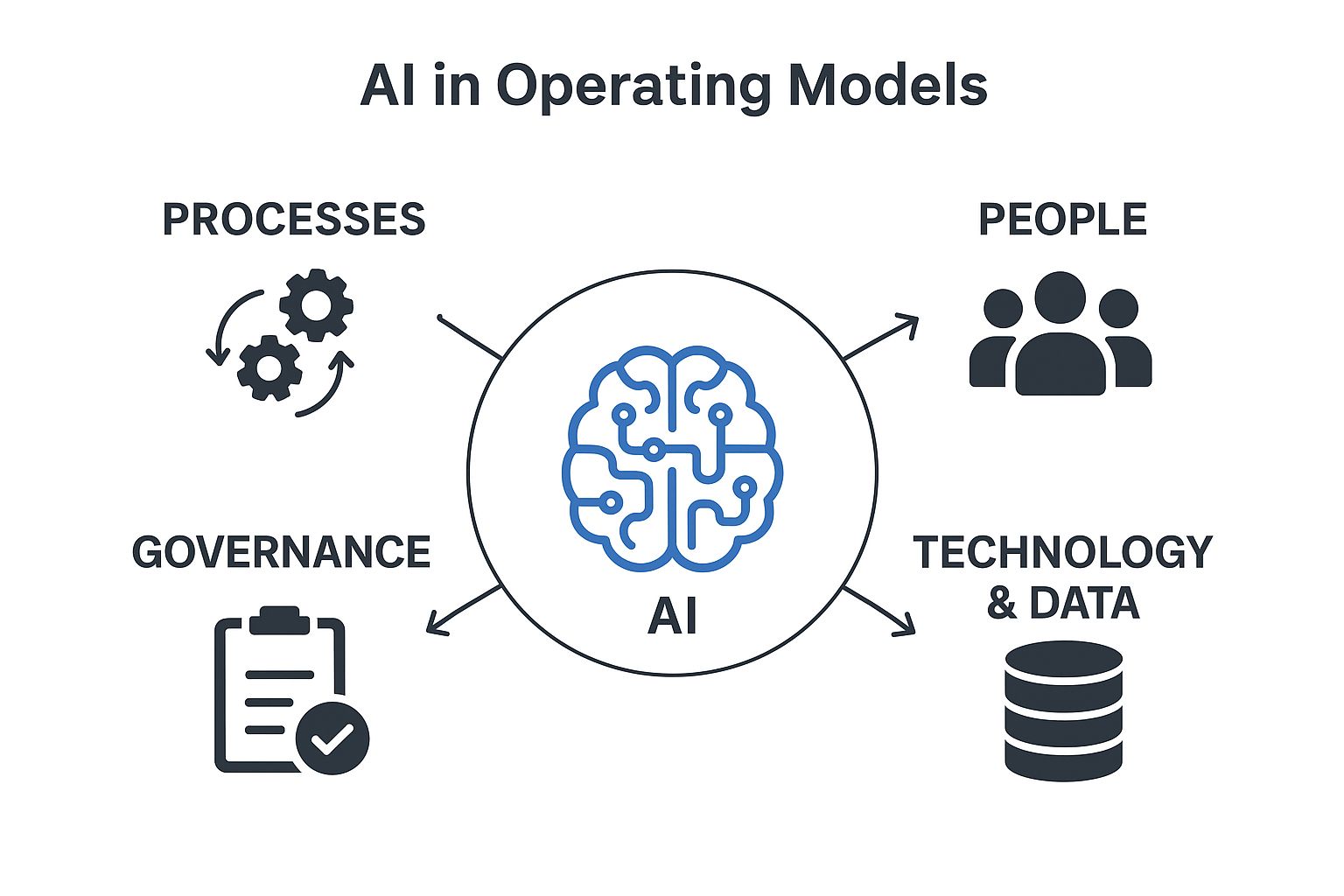 Comunidad
Comunidad
IA in Operating Models
09/10/2025 | Freddy Rosas Avendaño

“IA in operating models” usually refers to how Artificial Intelligence (AI) is embedded into the operating model of a company — meaning the way an organization delivers value (its processes, roles, governance, technology, and culture).
Here’s a breakdown to make it practical and actionable:
🔧 What an Operating Model Is
An operating model describes how a company runs day-to-day to deliver its strategy. It typically includes: • Organization & Roles – Who does what • Processes & Workflows – How work is done • Technology & Data – What systems and data are used • Governance & Decision-Making – How priorities are set and monitored • KPIs & Performance Management – How success is measured
🤖 How AI Can Be Embedded into Operating Models
-
AI-Enhanced Processes • Automation: Using AI for repetitive tasks (e.g., invoice processing, scheduling, routing). • Decision Support: Predictive analytics to optimize planning, demand forecasting, pricing. • Intelligent Workflows: AI-powered orchestration that routes work dynamically to the right teams.
-
AI-Driven Roles • New Roles: AI product owners, data scientists, ML engineers, prompt engineers. • Augmented Roles: Managers using AI dashboards for real-time decision-making, HR using AI to screen candidates.
-
Data-Centric Architecture • Single Source of Truth: Unified, clean, labeled data for training AI models. • ML Ops / AI Ops: Continuous model deployment and monitoring integrated into IT processes.
-
Governance & Ethics • AI Governance: Policies for fairness, transparency, compliance (e.g., EU AI Act). • Risk Management: Model drift detection, bias monitoring, explainability frameworks.
-
Culture & Upskilling • AI Literacy Programs: Training employees to use AI responsibly and effectively. • Change Management: Building trust and adoption among teams.
🏗 Framework for Implementing AI in Operating Models
- Assess Current Operating Model – Map key processes and pain points.
- Identify AI Opportunities – Automate, augment, or redesign workflows.
- Build the AI Capability – Data, infrastructure, people, and governance.
- Pilot & Iterate – Start small (1-2 use cases), measure impact, refine.
- Scale Across the Organization – Standardize and embed AI in BAU (business as usual).
If you’re interested in this topic, feel free to get in touch or share your thoughts in the comments.
Encuesta
Votar →When integrating Artificial Intelligence (AI) into an organization’s operating model, what is the most critical first step to ensure AI delivers measurable business impact?
Votos: 0
Aportaciones y comentarios
Comentar →Este tema no tiene comentarios.